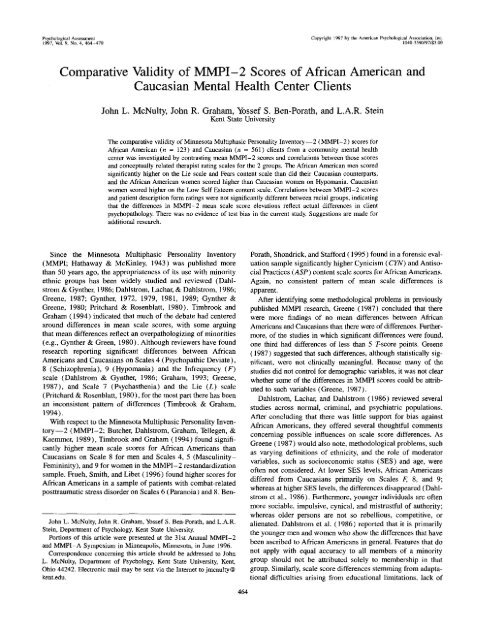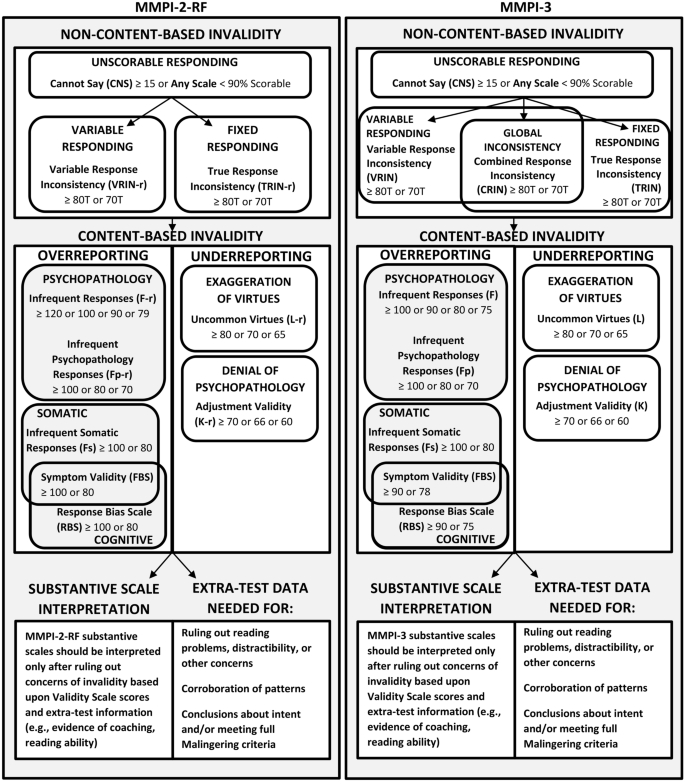

They found a strong relationship between reported pain disorder and conversion disorder (experiencing psychological and emotional problems as physical pain). applied the MMPI-2 to 307 female and 161 male patients with chronic pain. A symptom validity scale (FBS) has been added to the inventory in recent years to help exclude symptom exaggeration and has been reported as having very low false-positive rates. There are ∼10 000 published papers using the MMPI-2 and this pool is added to by hundreds of papers every year. The MMPI-2 was validated using a normative sample of 2600 adults. psychopathy) and general personality traits such as anger, somatization, hypochondriasis, ‘type A behaviour’ addiction potential, poor ego strength and many others. depression, anxiety, post-traumatic stress disorder), personality characteristics (i.e. The measure has many clinical scales assessing mental health problems (i.e. These scales make it very difficult to fake the MMPI-2 results. It has nine validity scales (or ‘lie’ scales), assessing for lying, defensiveness, faking good and faking bad and among others.

The MMPI-2 is a 567 item, true/false self-report measure of a person's psychological state. It takes most people between 1 h and 90 min to complete the MMPI-2. As such, it should be regarded as a complex diagnostic investigation for relatively infrequent use.

One of the disadvantages of the MMPI-2 for the occupational health physician is that the MMPI-2 is a strictly licensed test and can only be purchased, administered and interpreted by a suitably experienced clinical psychologist or psychiatrist. The MMPI-2 can also be used to assess psychological stability in workers in ‘high-risk’ professions such as airline pilots, police or workers in the nuclear power industry. For example, the MMPI-2 should normally be able to detect unconsciously somatizing or consciously malingering in patients. The data from MMPI-2 assessments are particularly useful in occupational health settings in complex presentations where doubt as to what is really wrong with the patient exists. Second, the MMPI-2 is based on empirical research and not on a clinician's assumptions about what answers indicate particular personality traits. First, it makes it very difficult for subjects to ‘fake’ responses, deny problems or give a particular impression. Often, the questions that do this most reliably are not concerned with health issues as such.

This involved basing the test scales (for example the hypochondriasis scale) on the actual test items that differentiate people with hypochondriasis from ‘normals’. The test developers Hathaway and McKinley used an empirical test construction technique to develop the MMPI. The MMPI-2 is used in mental health, medical and employment settings. It is the most widely used psychometric test for measuring adult psychopathology in the world. The original Minnesota Multiphasic Personality Inventory (MMPI) was published in 1940 and the second revised version-the MMPI-2-was published in 1989.


 0 kommentar(er)
0 kommentar(er)
